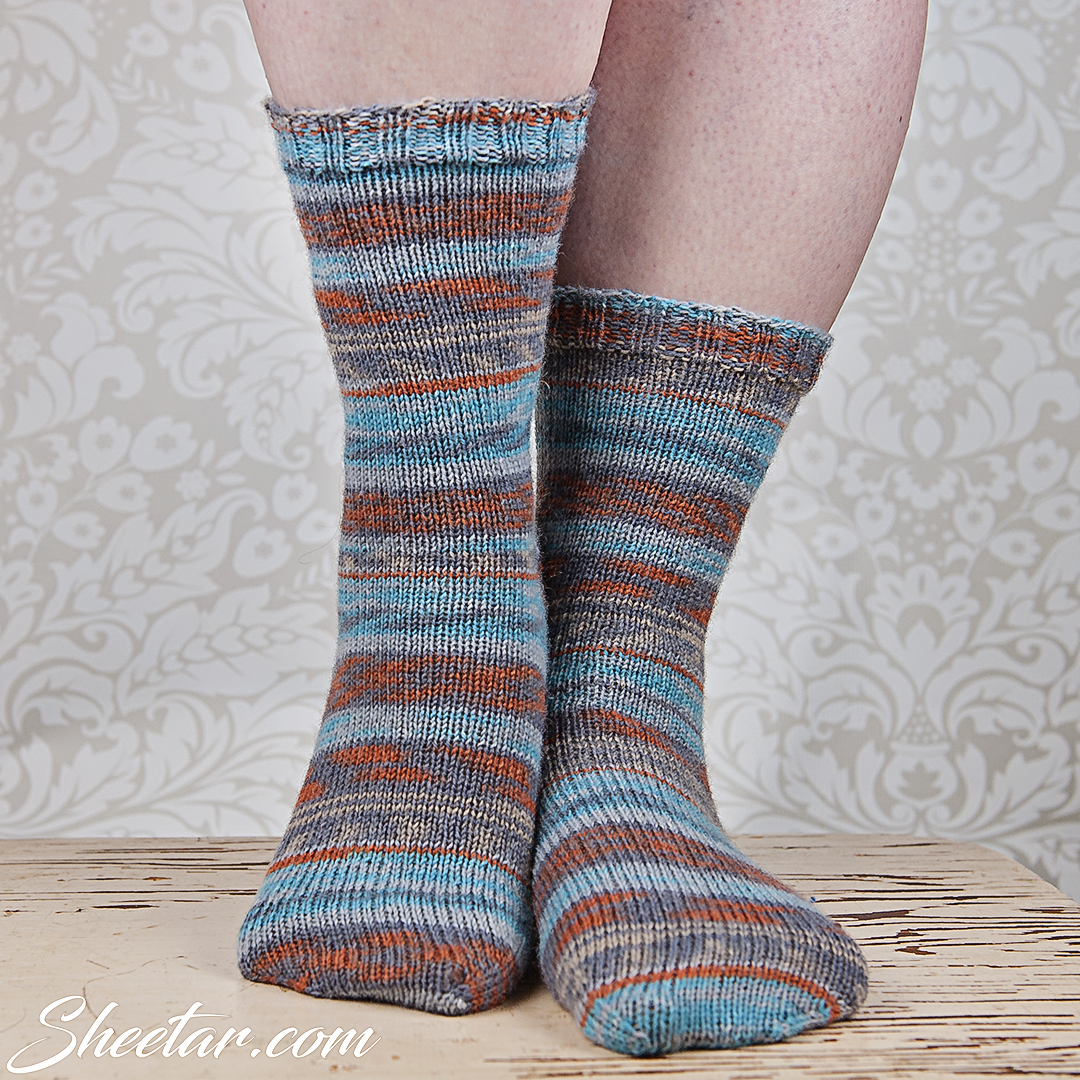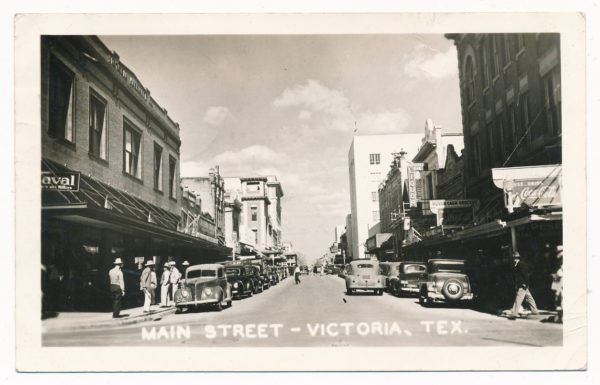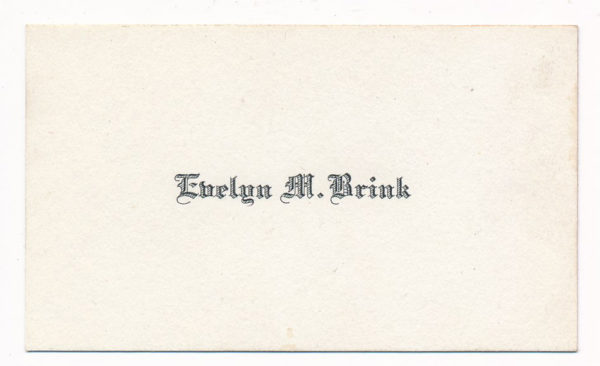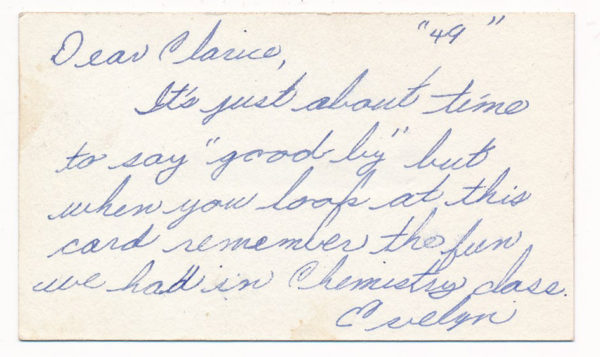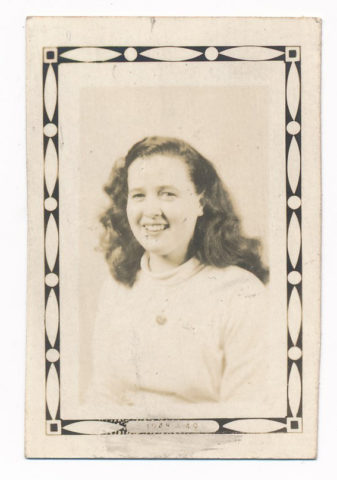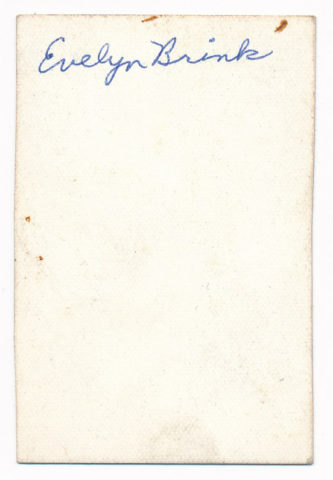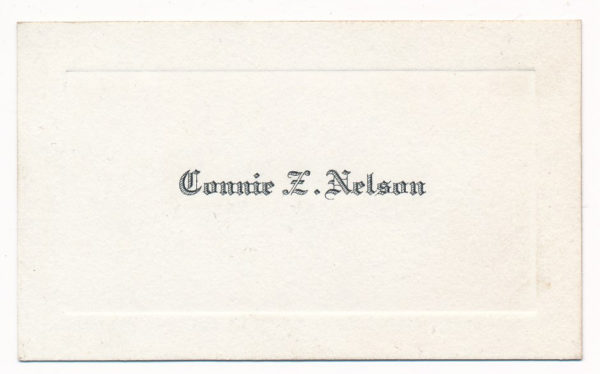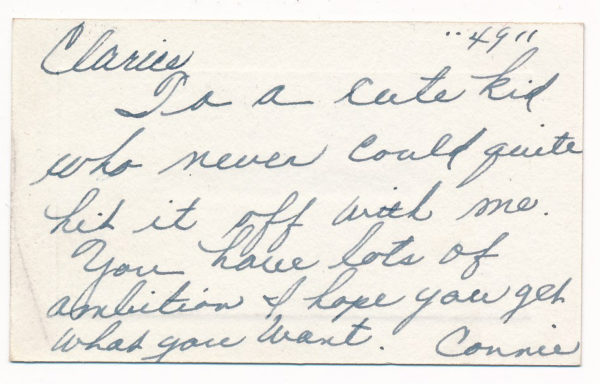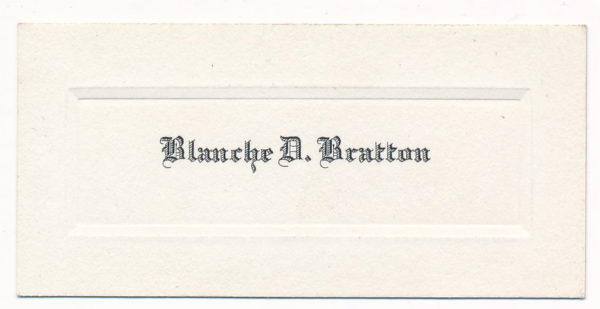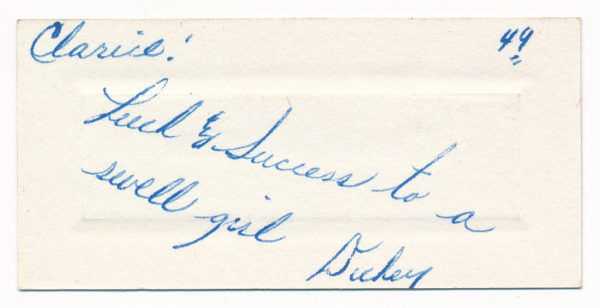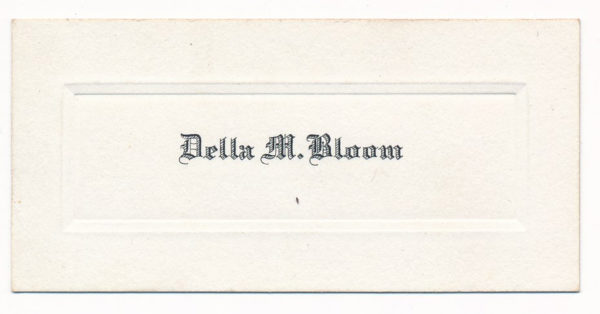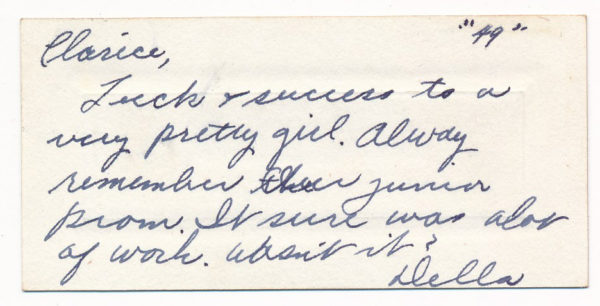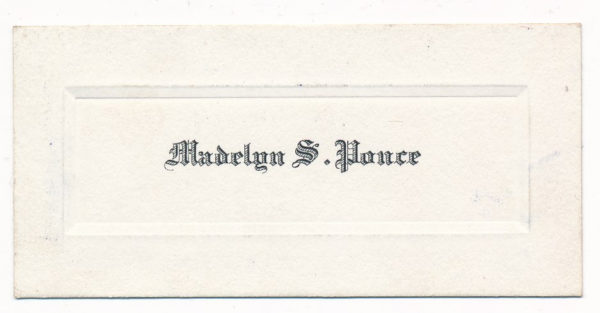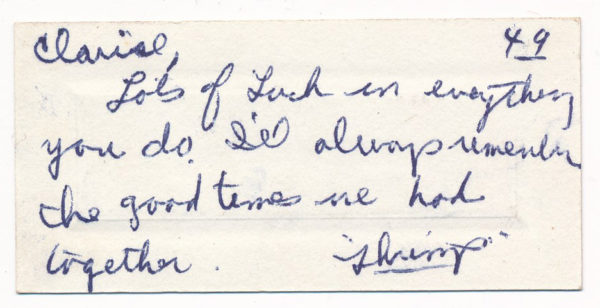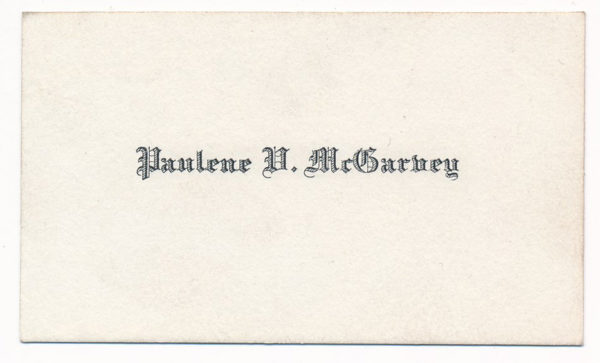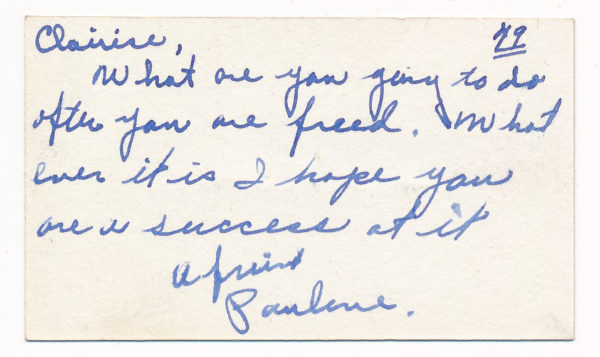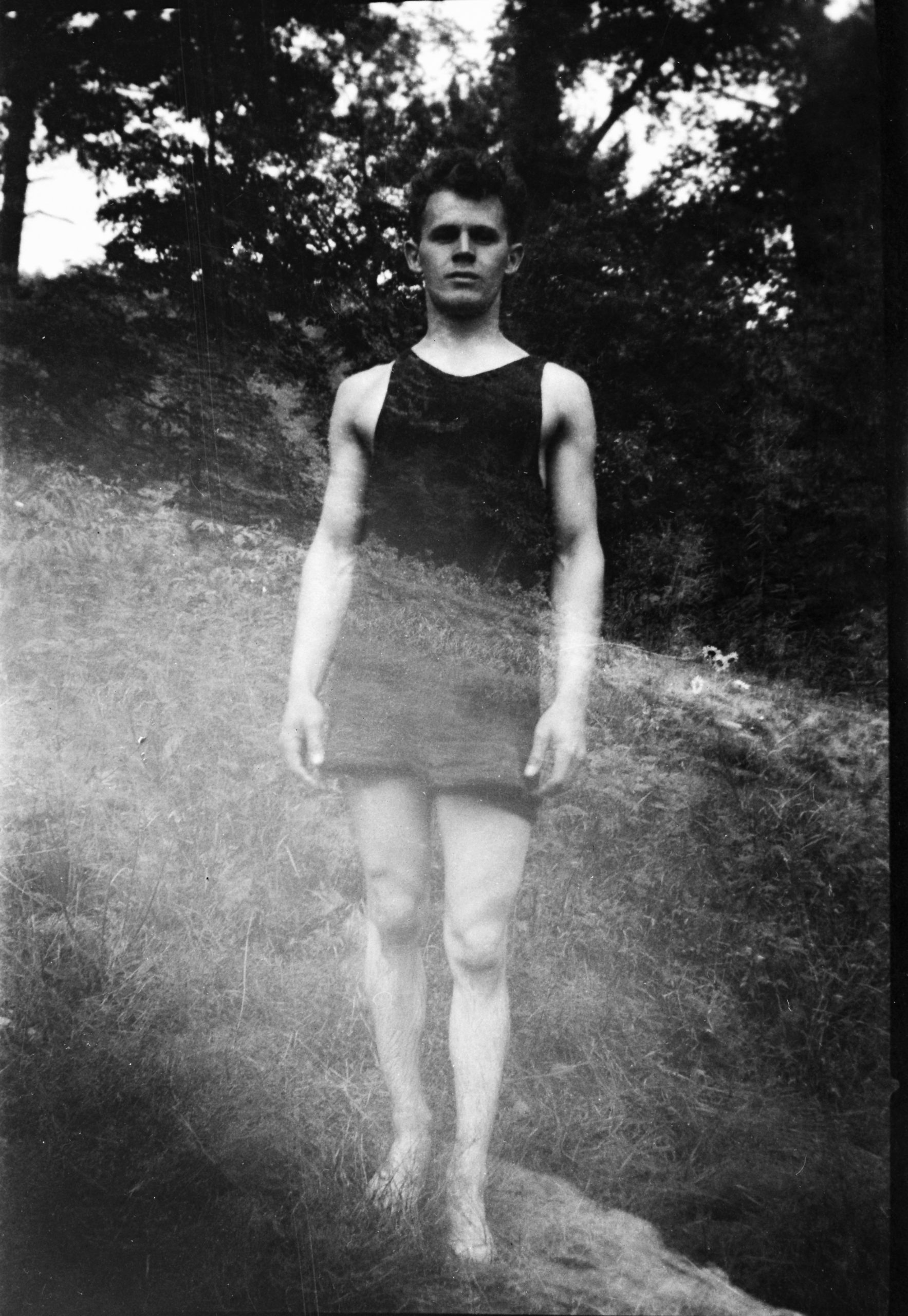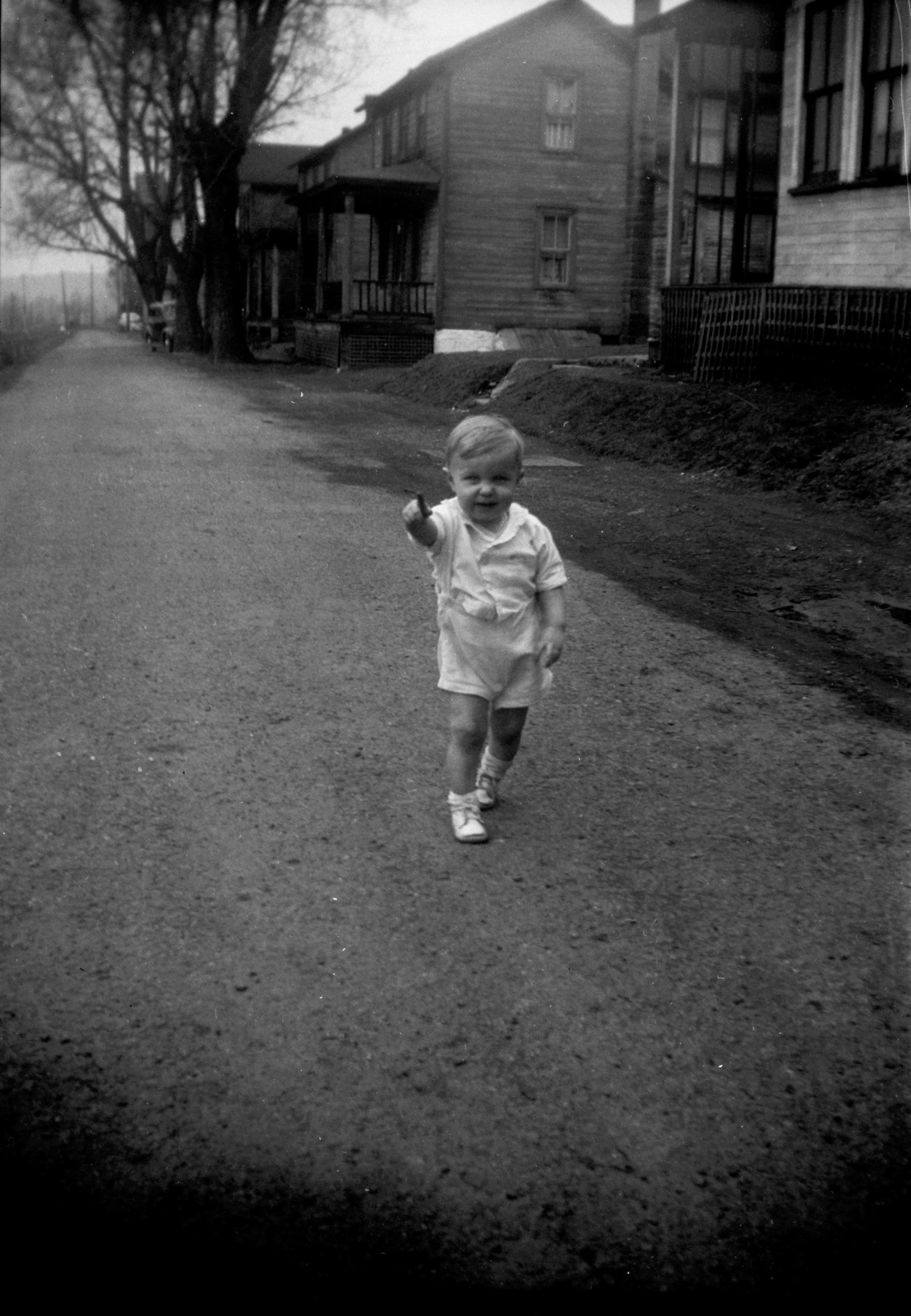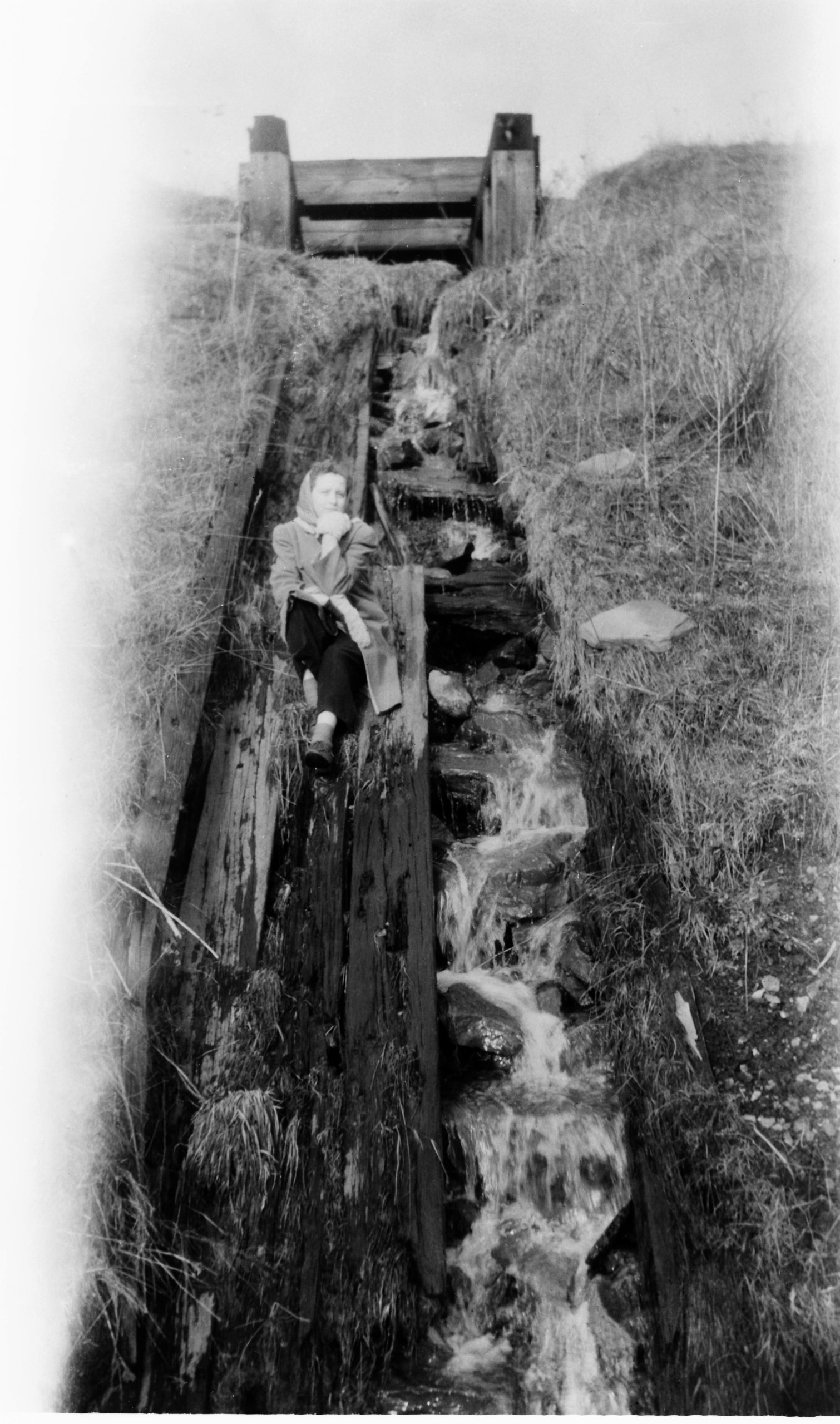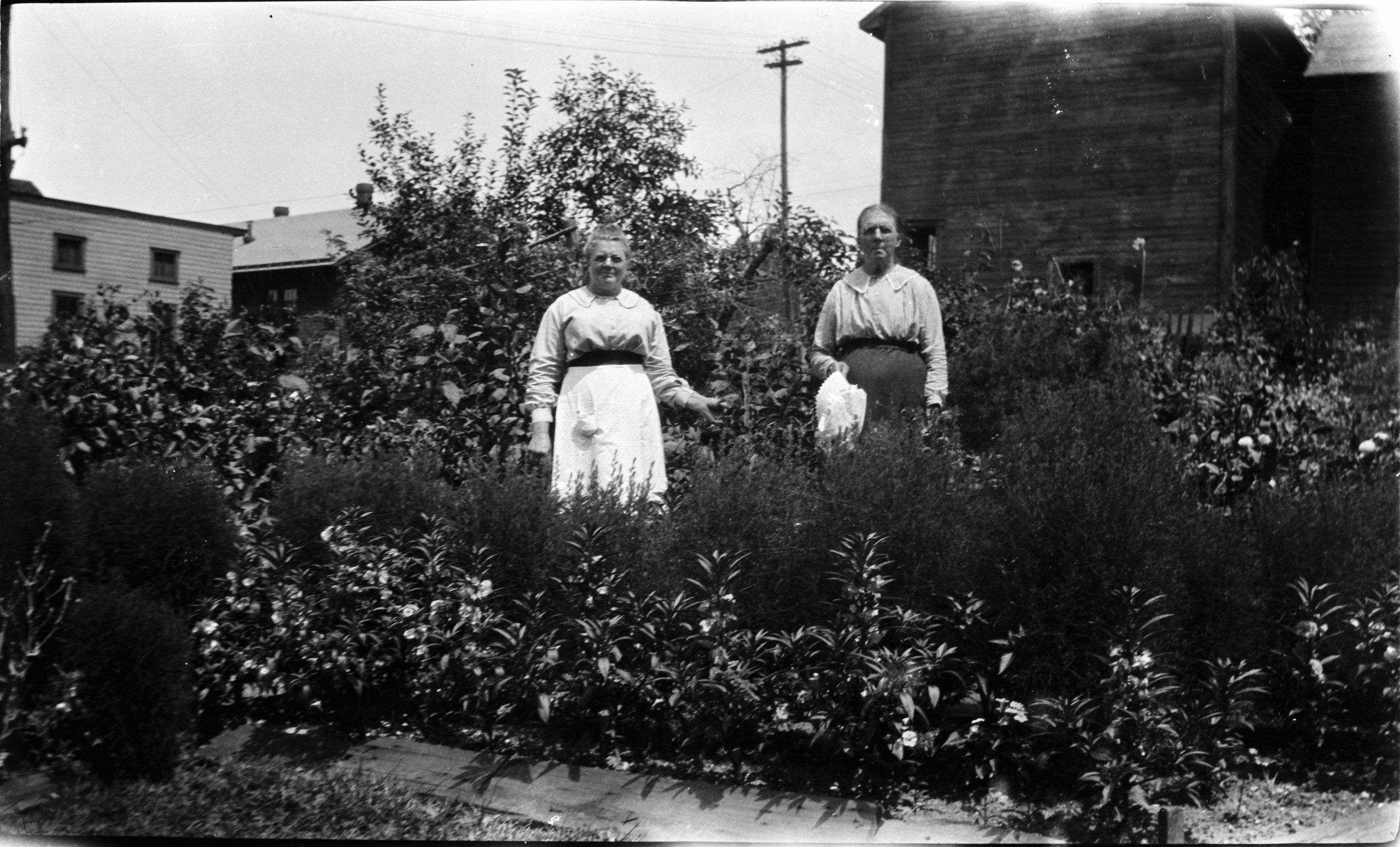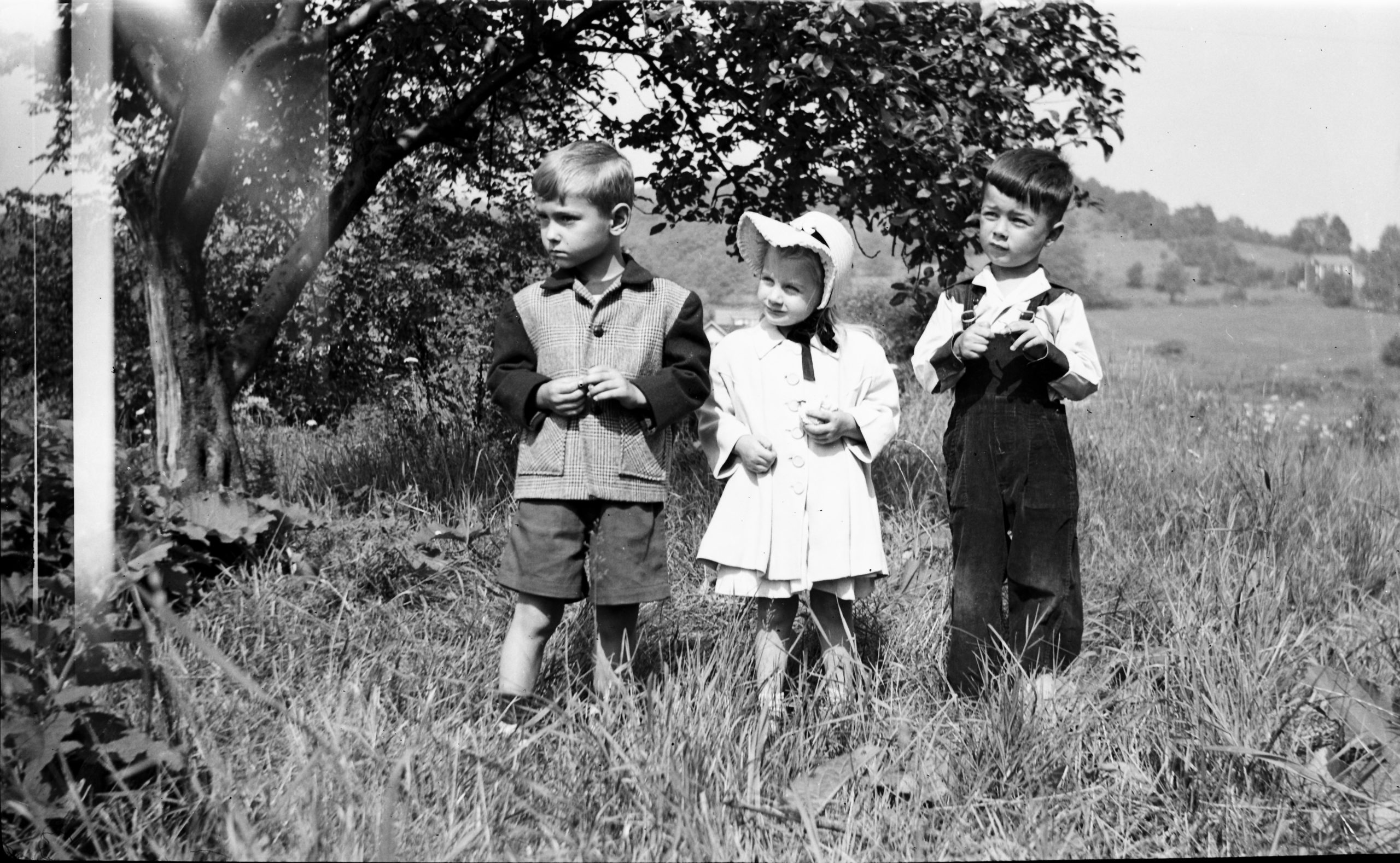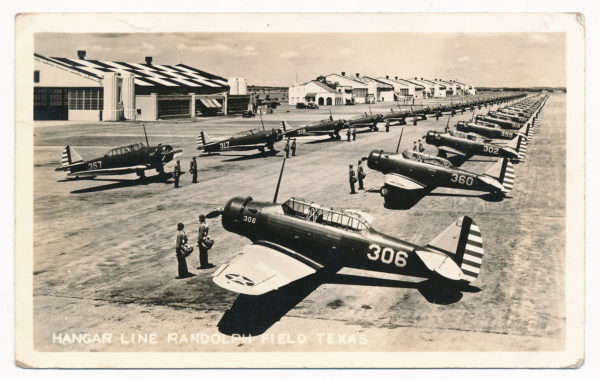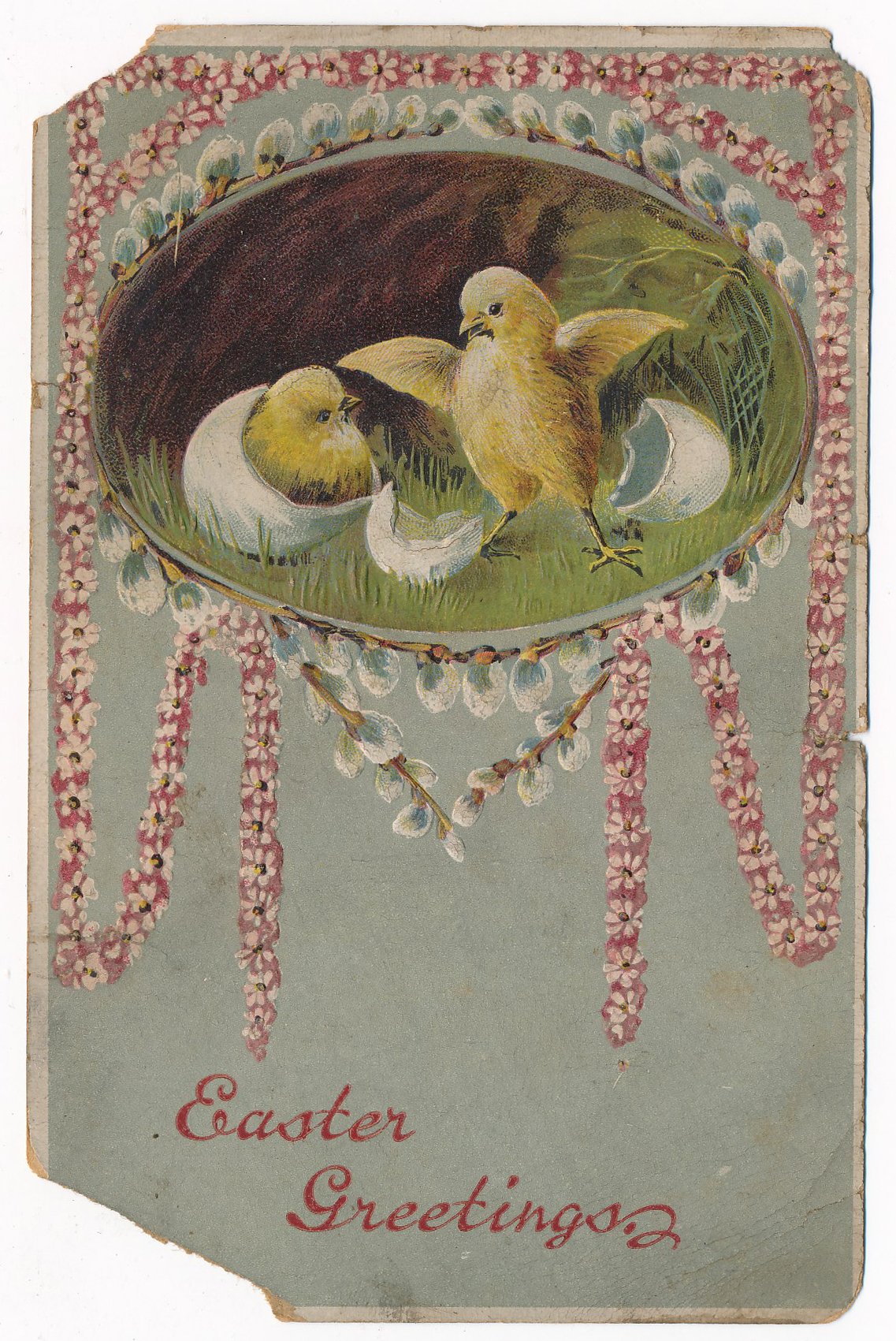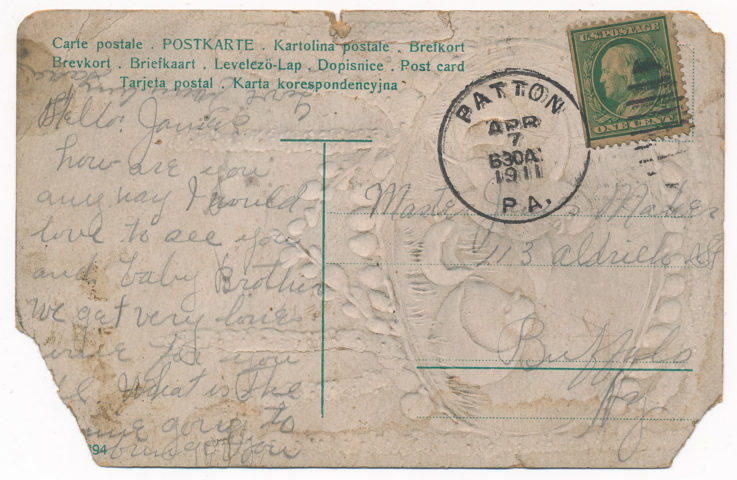These were collected by my paternal grandmother in school, and most of them are dated 1949. I’m going to post these in two parts because there are quite a few, but I thought it would be fun to bring them to the light of day again in case someone is searching for their ancestor and happens upon these. These small tokens with personal messages sometimes can give you more insight into their handwriting and personality, and they’re just plain fun.
Background – apparently in high school, kids got these name cards to hand out to their fellow students. I’ve seen them in modern graduation announcements as well, and some have messages written on the back, while some don’t. At least at this school, the Coalport-Irvona High School, the kids signed the back with a little message, kind of in the style of signing a yearbook. Here are the first six with transcriptions. If you want a link to the tag with them all, click here.
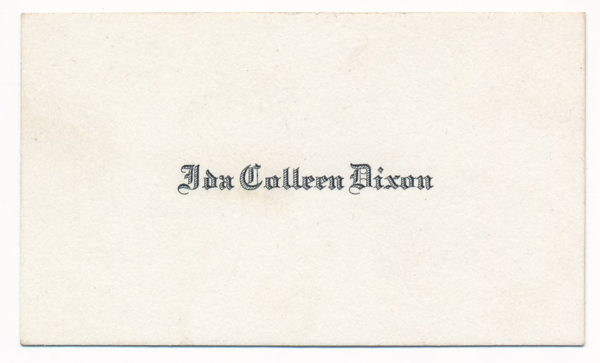
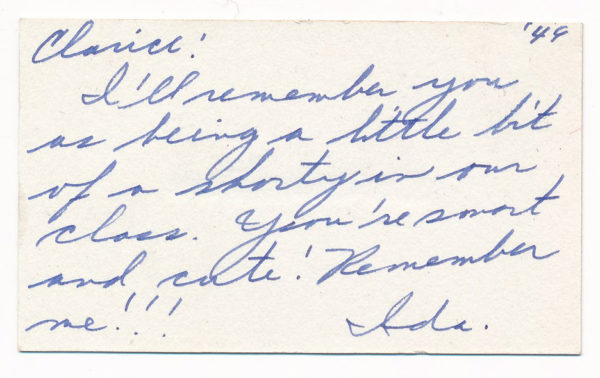
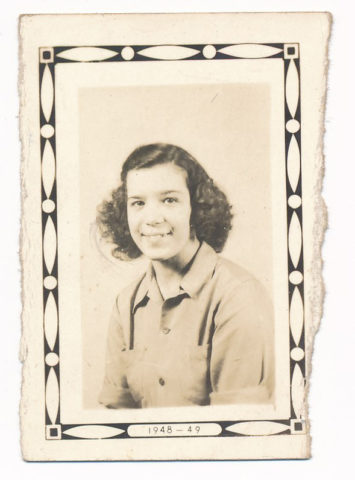
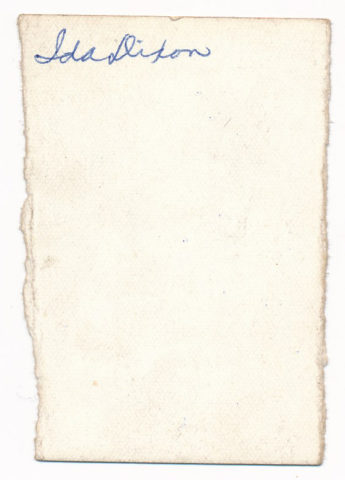
Ida Colleen Dixon: “Clarice, I’ll remember you as being a little bit of a shorty in our class. You’re short and cute! Remember me!!! Ida.”
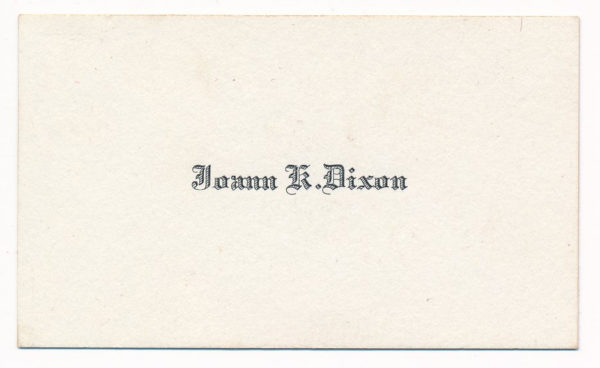
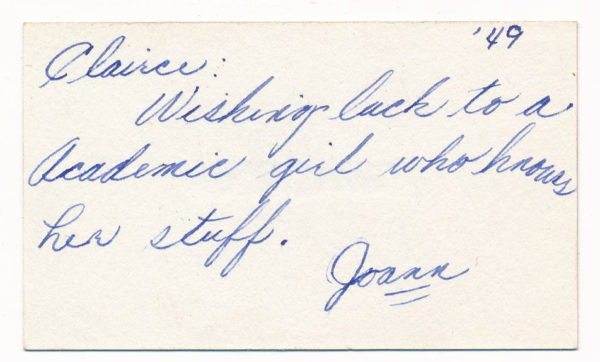
Joann K. Dixon: Clarice, Wishing luck to a academic girl who knows her stuff. Joann”
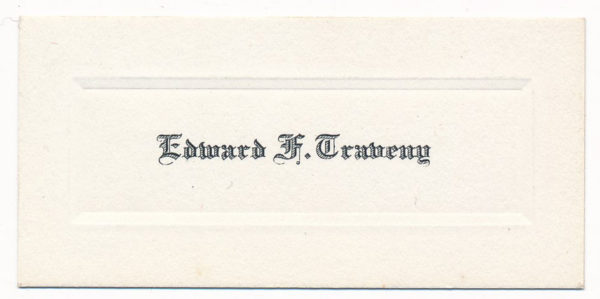
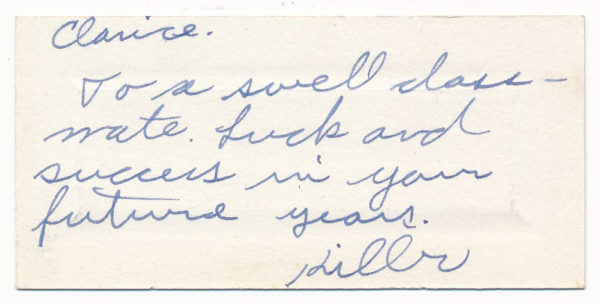
Edward F. Traveny: “Clarice, To a swell classmate. Luck and success in your future years. Killr[??]”
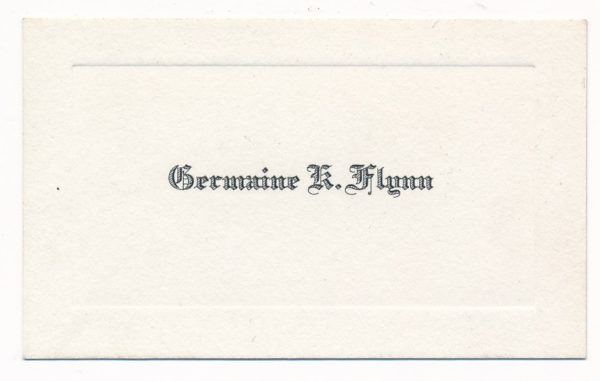
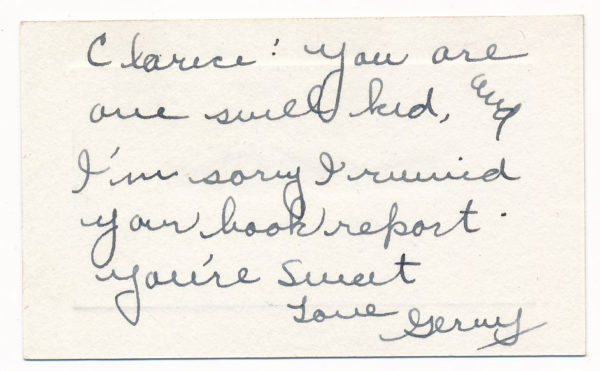
Germaine K. Flynn: “Clarice! You are one swell kid, and I’m sorry I ruined your book report. You’re sweet. Love, Gerry”
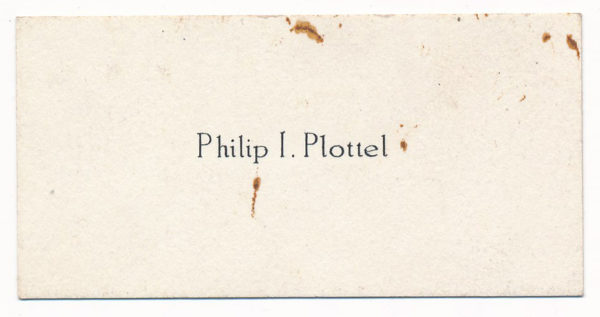
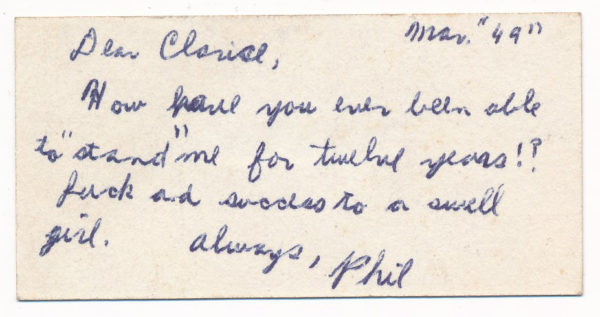
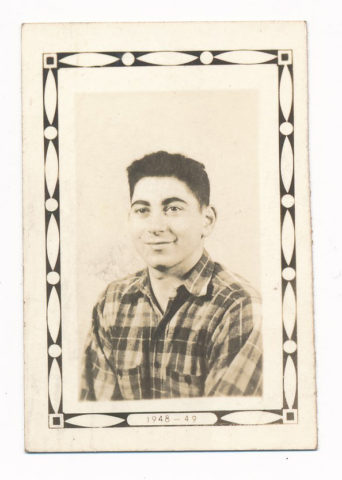
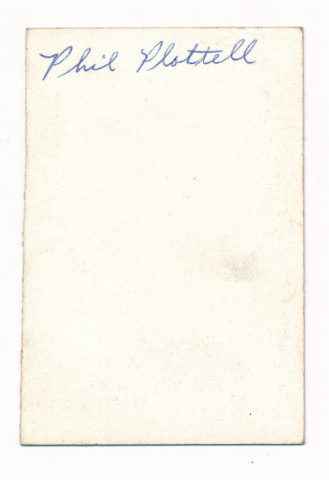
Philip I. Plottel: “Dear Clarice, How have you ever been able to ‘stand’ me for twelve years!? Luck and success to a swell girl. Always, Phil”
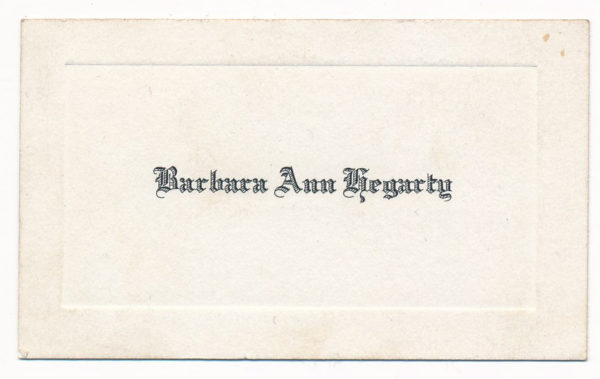
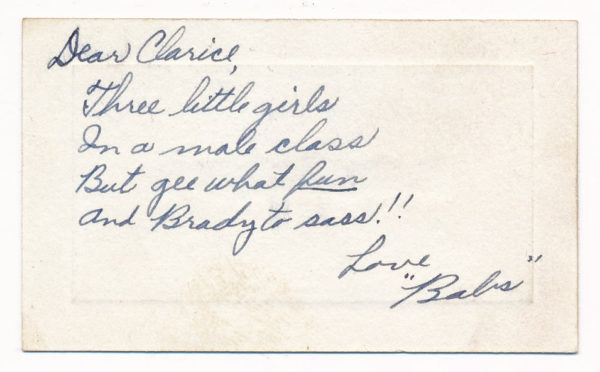
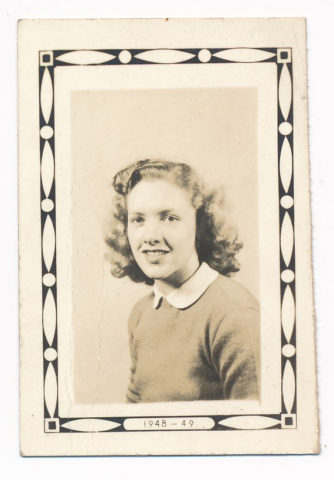
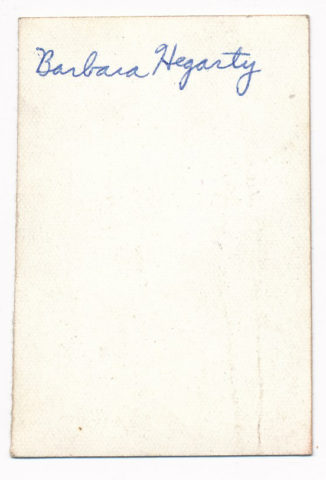
Barbara Ann Hegarty: “Dear Clarice, Three little girls, In a male class, But gee what fun, and Brady to sass! Love, ‘Babs'”
UPDATE:
I did find some photos for some of these kids, so I’ve added those to the name cards as I’ve found them!
